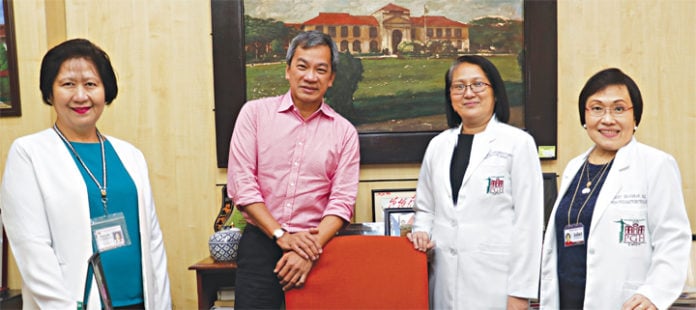
A baby had a blood transfusion while inside the uterus of the mother. A jeepney driver had a robotic surgery to remove his cancerous prostate. The hospital has the highest rate of thrombolysis procedures done in the country where blood clots are broken down. It also has the highest number of surgeries in separating conjoined twins.
One would think that these procedures were done in the big private hospitals in the country. Lo and behold! The Philippine General Hospital (PGH) is proud to have achieved these cutting-edge technologies—with most of its departments being declared as “centers of excellence’ because of its well-trained doctors and with the funding assistance from the government and the private sector.
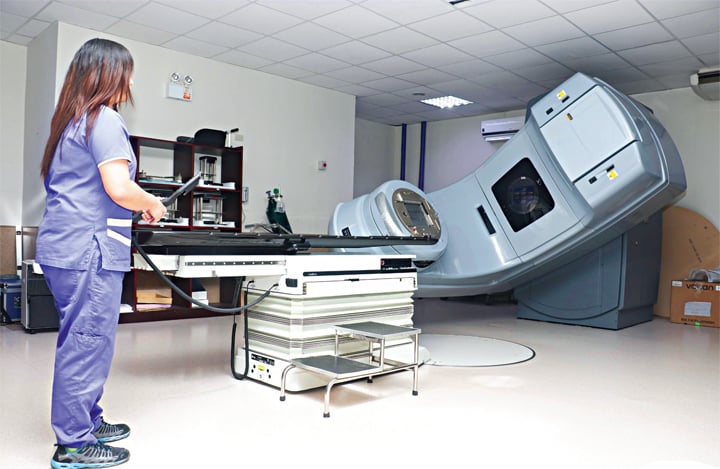
PGH Director Gerardo Legaspi, a renowned neurosurgeon, said PGH, known as “the hospital of last resort” is “comparable” to big private hospitals.
He said PGH is on a par with big private hospitals “in terms of delivery of services” and has “reached the goal of surpassing” them in terms of equipment.”
He explained: “But more important than the equipment is the expertise. I feel sad when all of our experts our doing their best outside in other hospitals because the technologies are not available here. It’s now my responsibility to try to make that available.
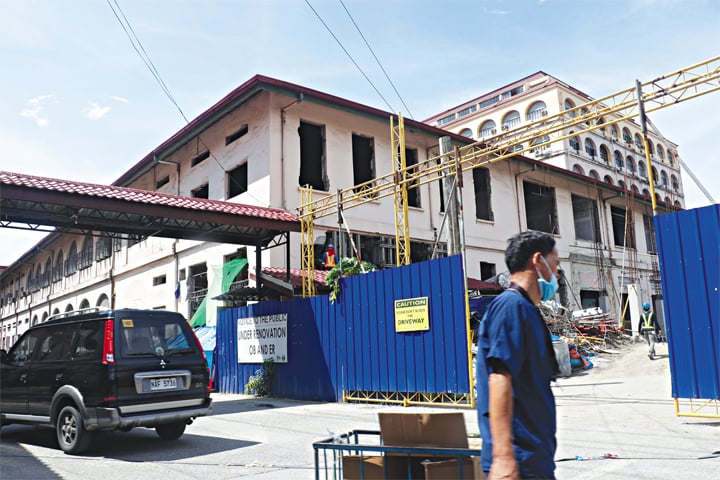
“That’s our role, to try to provide cutting-edge technology. We are hoping that in PGH, one day you will see the richest and the poorest in one hospital, and become the equalizer of those opportunities.”
112th anniversary
PGH is celebrating its 112th anniversary on September 12. The 1907 Commonwealth Act 1688 was passed for the construction of PGH to serve the poor Filipino patients, but it actually opened in September 1910, with 425 beds.
It was the training ground for the then-Philippine Medical School, which eventually became the University of the Philippines (UP) College of Medicine.
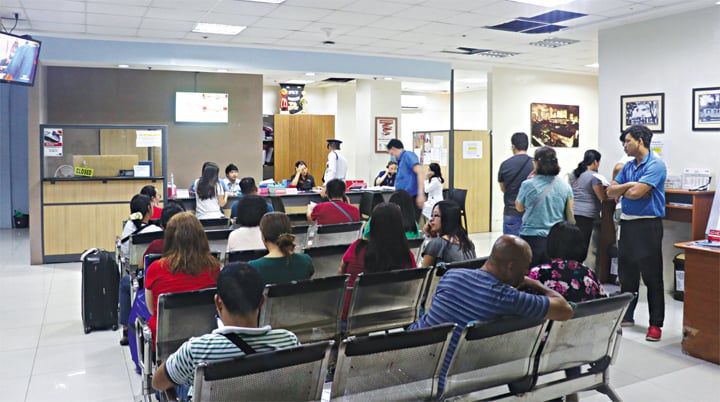
“In the 1970s, when the health service in the country deteriorated, as a [medical] student we had no materials to use for patients. We sutured with our bare hands; we had no gloves. We had to wait for the extra materials from our co-interns who are suturing their patients. There was no sterilization. We just had to soak our tools in Cidex solution. The blood dried up on our hands until we go home. And the patients had to buy their own medicines,” Legaspi told the BusinessMirror’s Health and Fitness in mixed English and Filipino.
When the economy got better, more attention was given to health, not only to PGH, but to other public hospitals as well.
More funds were sourced, such as from Japan International Cooperation Agency. Additional buildings, such as the seven-story Central Block Building were built to cater to more services.
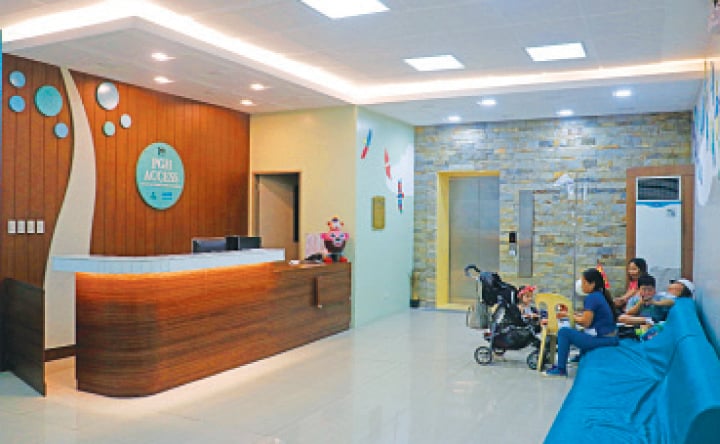
In 2009 the Queen of Spain gifted PGH with the Sentro Oftalmologico Jose Rizal, supposed to be the National Eye Center.
The university hospital, has “triumvirate functions of service, training and research.”
Legaspi explained that service is the “primary role” of any government hospital.
“In PGH we have to give equal attention to research and training. When you make your plans, service is the pivot. You don’t recruit patients so you have materials for training. You recruit doctors to serve the patients….If not, it would appear that when patients go to PGH they will just be experimented on….It is important in changing the mindset of our trainees, of our doctors.”
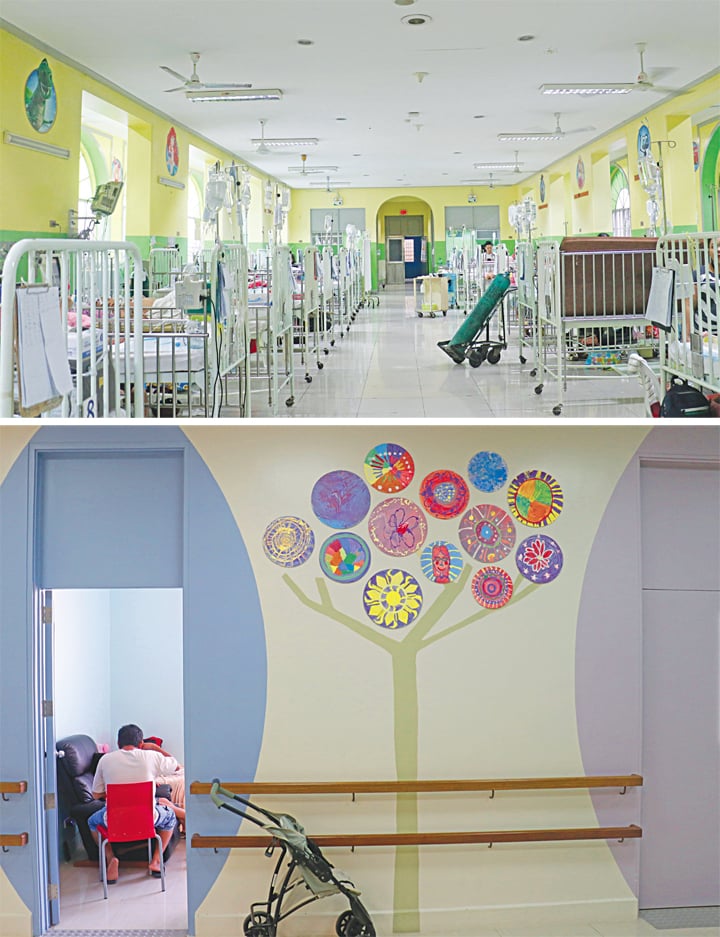
The PGH budget initially came from the UP System. However, in 2014, UP PGH turned semi-independent and was allowed to keep its own income, “which had a big impact on health care.”
PhilHealth: Game changer
THE Philippine Health Insurance Corp. (PhilHealth) became the “game changer” for PGH, Legaspi said.
He explained that with the former Medicare, if a person had no money, he had no medical coverage. “If a patient arrives at the ER [Emergency Room] the doctors had to look around for medical materials. The resident doctors were known for wiping out their salaries on their patients for materials, medicines, CT scan tests or respirator.”
But with PhilHealth, with its goal of universal health care, many services for the poorest of the poor, which is around 20 percent of the country’s population or 90 percent of PGH’s patients, were covered.
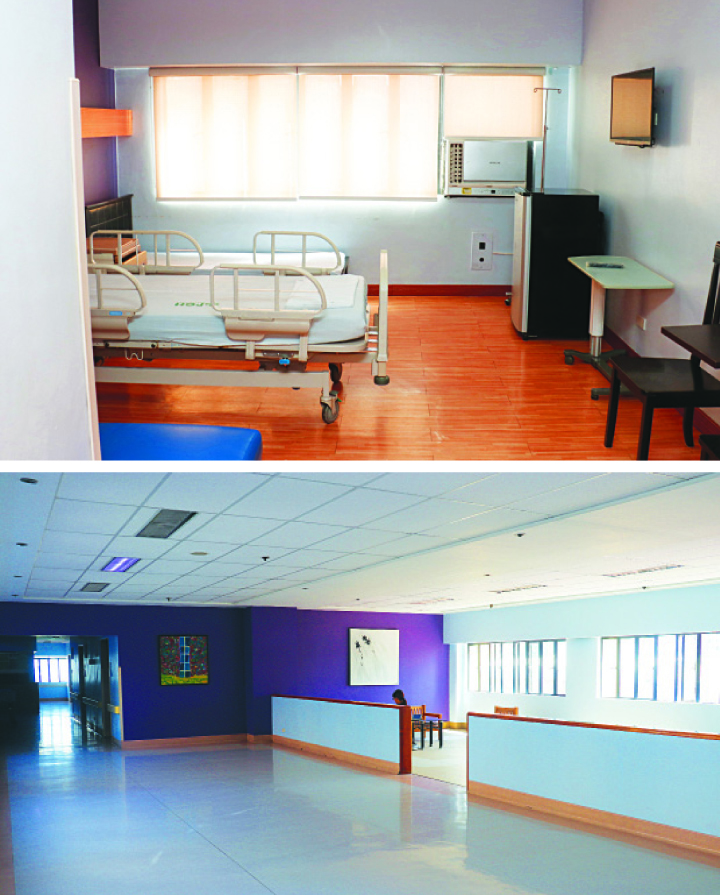
“Now it’s possible for the patient to go home without having to put out a single centavo. If the bill is P300,000….That puts the pressure on us to look for funds from PCSO [Philippine Charity Sweepstakes Office], Pagcor [Philippine Amusement and Gaming Corp.], DSWD [Department of Social Welfare and Development], DOH [Department of Health] and the Office of the President,” Legaspi said.
He said improvements in the health system are possible because it is having more money. “It just needs to manage those resources [properly] so we can have a greater impact on our patients.”
PGH had its third tranche of a P100-million fund from the Office of the President (OP) since March 17, 2017. The fund—which has benefited 5,000 patients—was released to the hospital as soon as it liquidated the earlier amount it received.
Legaspi said the sin tax gave P3 billion to PGH from P120 billion a year that the tax generated since 2015.
Infrastructure development
LEGASPI said with the hospital’s needs for equipment and other materials now being funded, the next phase is to develop the infrastructure of PGH to be responsive to patients’ needs. He said the PGH wards were designed in 1910 for 36 patients each, but currently has 60 patients each ward.
“You can imagine how much contamination and cross infection [that causes], so we have to do something about that,” he said.
“There are no areas where patients can relax. They look tense,” he explained, adding that the improvement of the overall cleanliness and the ambiance to aid healing will be looked into. “There are studies that show people act according to the environment.”
The hospital’s modernization was based on the principles of historical restoration and modernization, which will be “patient-directed”; the administration offices will be secondary.
The hospital’s four historical sites are: the main building, which William Parsons designed in 1910; the Dorm 1 built in 1910, or the old nurses’ home, where only the American nurses lived; the new nurses’ home in 1938 for the Filipina nurses home designed by Tomas Mapua; and the Cancer Institute.
The pharmacy and the Out-patient Department have been renovated already.
The Dorm 1, besides being a residence for female resident doctors, is going to be a 35-bed halfway house for patients from out of town who have to go to OPD and currently sleep at the sidewalk because they have to return the next day,” he said.
It will have a feeding program to be run by the PGH chaplaincy and hooked up with the Quiapo Church and the Archdiocese of Manila.
Emergency Room
ON top of the list of the infrastructure program is the ER. “It will be the most beautiful and Emergency Room. I promise that,” Legaspi said.
Its construction will be turned over in February have its first patient in April, although Legaspi said he urged the contractor to open earlier even just the main ER in order to provide services to the public.
From the original schedule of September, the turnover was moved because many old structures were dug from the old building that saw the need for retrofitting and redesigning.
The ER—which is planned to accommodate 120 patients, from the current 60—will stand in the same area with a new building and design and “with no old item in it.”
Designed by architect Dan Lichaoco, the new ER is L-shaped with an Obstetric Admitting Section ER for those who will deliver their babies or have gynecological problems. Beside it are the General Emergency Room and four Operating Rooms.
A triage system will be used with the emergency severity scoring index, where trained personnel will determine where patients should go, and not mix the dying and emergency patients, those with communicable and non-communicable diseases, and the young and old patients.
It will have an isolation room, psychiatric room, grieving room and big waiting room—“all of the needed [spaces] that were absent in the old ER.”
Besides its modern ventilation system, the ER will have an elevator connected to the main OR on the upper floor.
“We would like to make it a model ER. That’s the role of PGH, to find a research on how to do things, to see if it works, and share it later on.”
Legaspi added that they will come up with a harmonized national electronic medical record system, where patients from PGH can get their medical records in hospitals in other regions.
Thrombolysis therapy
PGH has the highest rate of thrombolysis procedures done. “We beat any other hospital, including St. Luke’s Global City, in thrombolysis,” Legaspi said, with the hospital handling 60 of the procedure a year.
Internet information said thrombolysis is the breakdown of blood clots formed in blood vessels, using medication. It is used in myocardial infarction, stroke and very large pulmonary embolisms.
He added: “Meaning, if you had stroke within three hours you were brought here, we activate a brain-attack team, brain-attack protocol. It is broadcasted over the PA [public address] system. Everyone has a role. They go to the ER [emergency room], the CT scan is waiting, and the labs are being done.”
PGH started using thrombolysis in 2016, when Legaspi became its director.
“Being a neurosurgeon for a hospital like PGH, I am having goose bumps whenever I remember this—hearing the PA system which could be heard rarely, only in Saint Luke’s Global City or Medical City. And to think that I’ve saved a lot of functions because of that. All of these services cost P1.8 billion per year, that’s a P120 million to P140 million a month.”
He said health care at PGH “is not cheap” because “we get the worst kinds—the worst breast cancers, we got the worst brain tumors, we got the worst ovarian cancers,” because “we do not turn away anyone” as a “hospital of last resort.”
He added that big government hospitals in other regions are already complete in their services—like the Southern Philippines Medical Center in Davao City and Vicente Sotto Memorial Medical Center in Cebu City, while the DOH is giving good attention to East Avenue Medical Center and Jose R. Reyes Memorial Medical Center—that can give good medical care.
‘All hospital departments have something new’
“ALL [hospital] departments have something new,” Legaspi said.
The Intensive Care Unit (ICU) is also being rebuilt, with the Nursery and the Neonatal ICU to be prioritized. It will also have a laminar flow system that controls particulate contamination, no object touching the floor, with sinks to wash hands and the ability to control infection.
“With the current crowded ICU, a baby dies a day. We have to control that,” he said.
Anesthesiology Department: ‘Center of excellence’
LEGASPI was proud to say that PGH’s Anesthesiology Department “is rated to be a center of excellence in anesthesia.”
It probably is the biggest program in the hospital, covering 54 operating rooms and with 30,000 operations a year.
Their training has leveled up from the former training through the patient to the current use of mannequins that simulates a patient.
Robotic surgery
PGH is the first government hospital to have a robotic surgery. PGH has been very keen on minimally invasive surgery development.
“The founders of laparoscopic surgery, the endoscopes all came from PGH,” Legaspi proudly said.
The next level is robotic surgery, with “more robotic surgery at PGH than in any other hospital on a monthly basis.”
Legaspi said: “One of the romantic things in serving at PGH is being able to give a charity patient exactly what the millionaire in [St. Luke’s] Global City gets.”
The first PGH robotic surgery patient was a jeepney driver whose early stage prostate cancer was removed in May. Instead of a big cut, only four holes were made. The patient is doing very well, with controlled cancer and has no need for other treatments.
After that prostate cancer surgery, many other surgeries were done, such as endometrial and pancreatic cancers.
Cancer
LEGASPI said the hospital may be the “center for pancreatic surgery” for difficult pancreatic cases. “The experts are here, they teach other doctors how to do it. We have our doctors for colorectal surgery.”
He added that PGH is the first accredited Z-package by PhilHealth for colorectal surgery. Meaning, that if a colon-cancer patient qualifies, the patient will be covered for a package of treatments up to radiation and chemotherapy because the hospital has all the facilities and capability.
The Cancer Institute was created in PGH in 1939. Developments in radiation therapy, chemo therapy and surgeries were made. Legaspi said the PGH Cancer Institute is the busiest cancer institute, which sees 60,000 patients a year, with 20,000 breast-cancer patients.
The patients are treated with robotic surgery, laparoscopic and other minimally invasive techniques.
He said the hospital’s next step is to help patients with their treatment in the hospital and outside.
With the recently launched “Alagang Breast Friend,” Hyundai Philippines’s Fe Agudo donated a new van, with digital mammography and ultrasound. Experts go out of town to screen women for breast problem, the first of which was in Ternate, Cavite.
The team saw 65 patients, where three patients were diagnosed with cancer.
Orthopedic
PGH has the most advanced gait analysis laboratory for those who have problems in walking, athletes or stroke survivors. It has a very complex camera and light system to check how one walks so that correction may be recommended.
Besides this, the Philippines, through the PGH is “one of only 39 countries in the world” accredited in fracture liaison system of handling unusual fractures among the elderly.
Telemedicine
PGH has a Tele-health Office or Tele-Health Unit to live stream conférences for education purposes that are broadcasted for partner-doctors from other hospitals in the country, such as those in government hospitals, or abroad.
However, he said the broadband system in the country has to be improved.
Conjoined twins
PGH has the “most conjoined twins surgery in history” with around “40 plus or 47,” including babies joined at the head.
Legaspi said ordinary conjoined cases are handled easily now, with the last patients not even admitted at the ICU.
Pediatrics: First intrauterine blood transfusion
PGH obstetricians and pediatricians made the “first intrauterine fetal transfusion in the country”, Legaspi said. It was a blood transfusion of a baby while still in the uterus of the mother because the baby has low hemoglobin. The procedure was done when the fetus was 24 weeks in July to reverse the deadly effect of low hemoglobin on the baby.
Cardiology
PEDIATRIC cardiology doctors are also active in treating heart defects with the advances in closing valvular problems, without opening the chest, with just using a catheter. Because of funds it gets from the sin tax, PGH has constructed three catheterization laboratories.
The hospital also has a program for patients suffering from heart attack. They are sent to the catherization laboratory to be given a stent for the blocked artery.
‘On the map of neurosurgery’
LEGASPI said in neurosurgery and in neurology there are studies on epilepsy, on movement disorders. One is a particular disease called X-linked Dystonia of Panay, or lubag.
Patients are found only in Iloilo on Panay Island, and only in the Philippines, where men at a certain age suffer from involuntary or uncontrolled movement of their body. This causes the distortion of the body and the face.
PGH doctors are in partnership with Massachusetts General Hospital and a private foundation in Boston to look for the gene that causes the disorder, which could be a genetic order only of Filipinos.
The hospital is also looking for equipment to alleviate the condition of the patients.
Another procedure that puts PGH “on the map of neurosurgery” is the micro or keyhole surgery for tumors or aneurysm. Former surgical opening as big as a hand is now just a small hole as big as a finger.
Training
“OUR doctors, our graduates are comparable with anyone. Our patients they also demand quality already not only in medical service but in behavior,” Legaspi said
He said the building of the private section of PGH encouraged its trained doctors to stay and not move to other private hospitals. Actually, others no longer train abroad and instead train at PGH.
The number of doctors establishing practice at PGH is increasing and more patients are having themselves treated in the hospital.
A US military hospital is sending their resident doctors to PGH for training because they gain more experience here than in the US on certain types of surgery. They’re sending their senior surgeon resident trainees.
On the salary side, the salary of residents in government hospitals, including PGH, is now double than those in big private hospitals, as a result of the government standardization of salaries.
Publication
THE PGH is also in the process of increasing its publication rate because in the academe, you’re only measured by the number of publications that you have.
“I’d like to put it on paper that the most cited University in terms of clinical, pre-clinical and health articles is UP.
In the world, in the last ranking last year, those cited articles are cited 98.8 percent times, which led over Oxford, Cambridge, Standford, Harvard.
The researches that are done in UP and PGH related to health, he said, became the basis why the world ranking of UP rose from 90 to 100, No. 4 in Asean and No. 38 in Asia.
(This was originally posted in Business Mirror PH on August 8, 2019.)
